Once you start planning a project, one of the key things you’ll do is establish a budget.
Now, within that budget, you also need to think about contingencies.
While budgets are predetermined money you’ll use up during every stage of construction, contingencies are a buffer that should only be used in case of emergencies.
These emergencies often refer to unexpected problems that will create additional expenses. So, to not exhaust your budget, having a contingency is critical.
If you’re still unsure what contingency is and how it can further benefit your construction projects, read on to learn more about key definitions, types, and approximate calculations for contingency in construction budgets.
In this article...
What Is Construction Contingency?
Contingency can have different meanings, depending on the industry. But in construction, it typically refers to an amount of money set aside to cover any unexpected costs in a project.
Moreover, contingency in construction is an aspect of risk management to ensure projects can progress without delay. It helps mitigate surprise costs due to numerous factors.
For example, bad weather or material price fluctuations. So, most contractors calculate contingencies in their budget from the very beginning.
In a nutshell, contingency has three main purposes:
- Account for errors and omissions
- Modify the scope or quality of the project
- Cover unknown conditions
This amount of money is represented by a percentage, and it’s reserved only for unforeseen costs.
You should think about contingency as insurance money only to be used when absolutely necessary.
That means you can’t allocate this money for any specific work, and it’s not “extra” money you can spend willy-nilly.
In fact, in the best case scenario, you won’t get to spend this money at all, having planned and used your original budget effectively.

All in all, contingencies are a useful budgeting tool in project risk management that will allow for cost changes during construction.
What Costs Can the Contingency Be Used For?
How you use your contingency should be clearly outlined in your contracts. Failure to do so will lead to disputes and costly delays.
So, you must discuss circumstances and scenarios that will allow you to use contingency beforehand.
This means that you need to distinguish between an unforeseen expense and a change order.
Some contractors will try to use contingency to cover change orders, but their peers disagree with that practice.

This is because, as mentioned earlier, contingencies are supposed to be reserved only for emergencies.
Therefore, some owners will forfeit any money saved in the budget for contingencies.
Also, change orders can often be a by-product of a contractor’s negligence, so owners aren’t willing to pay for them either.
Kenneth Fields, a lawyer at Greenberg Glusker, agrees.
According to him, contingencies should not be spent on mistakes caused by the contractor’s omission in the bid or any part before turning in a proposal.
Here is a nifty list of items you can include in the contract as justifiable reasons to use contingency:
- Design errors
- Hidden conditions
- Abnormal weather caused delays
- Material cost overruns
- Regulatory change
- Over time and multiple shifts not due to unexcused delays
- Bankruptcy (subcontractor, supplier, contractor, etc.)
- Warranty costs
- Safety items
- Cost overruns of general conditions
Obviously, you can add to this list and negotiate other items that can be considered for using contingency.
But the most important thing, according to Quinn Murphy, an attorney at Sandberg Phoenix, is to draft thorough contracts and discuss what the contingency funds will be used for.
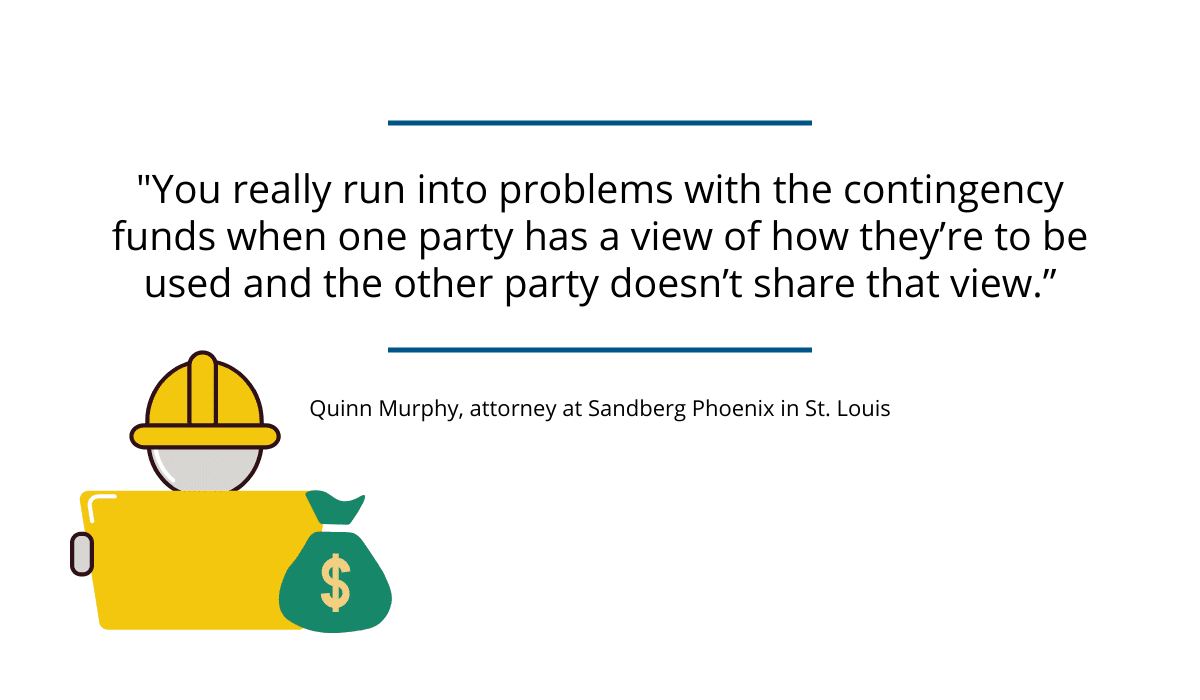
In the end, what is considered an unforeseen expense depends on your negotiation skills and what you include in the contract.
But the rule of thumb is to only account for additional funds for unexpected costs we listed above.
What Is the Amount of Contingencies Contractors Should Have?
The amount of contingency you need for every project is different.
That is because each construction project is unique, and problems arise in one project that might not appear in another.
On the one hand, you want the right amount of money saved up to cover any eventuality, but on the other, you don’t want to create a too large buffer, so you end up overbidding and losing the job.
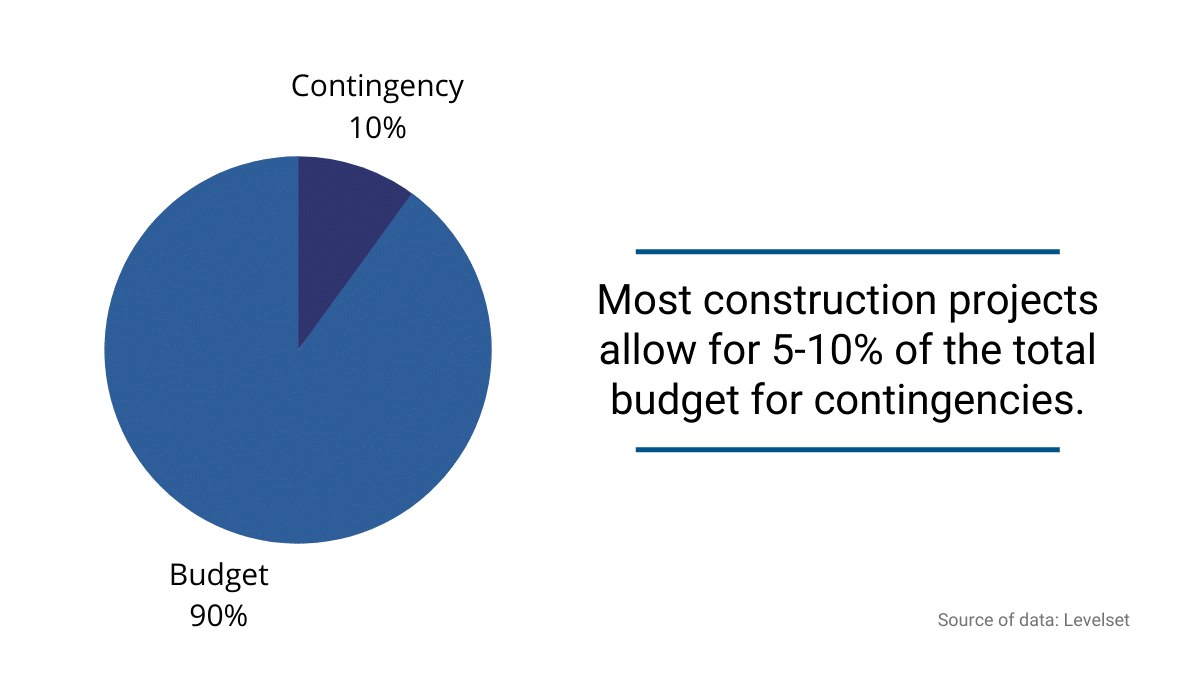
In most online resources, you’ll find that most construction projects allow for 5-10% of the total budget for contingencies.
Yet, if you ask other contractors, they will have a different practice and view on what is considered a good contingency.
For example, this contractor has a different percentage for contingency depending on the type of project they undertake.
So for new construction, a healthy contingency is 2%, while remodeling projects can range from 5% to 20%.

Another contractor has a different opinion and usually sticks to a 10% of the total budget to account for contingency.
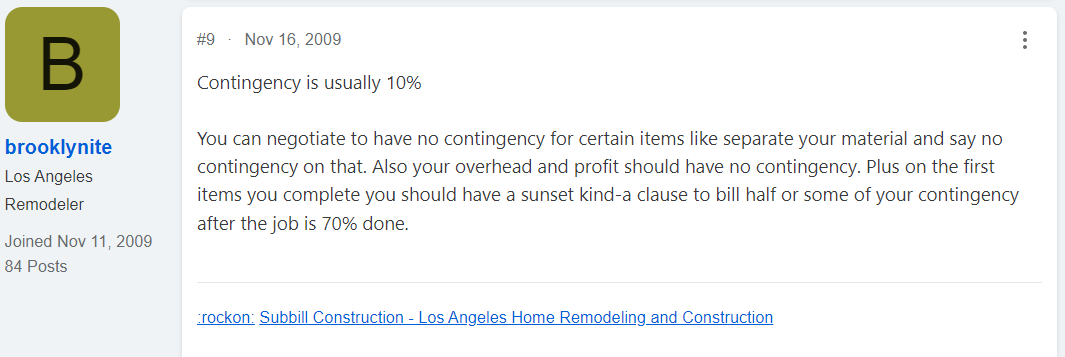
Simply put, everyone will have a different strategy and opinion on what is considered a good contingency.
The most important thing is that you start with an average baseline, identify specific problems and calculate the most realistic number to cover the most unexpected construction costs.
Benefits of Having Budget Contingencies in Construction
Apart from being insurance money you can tap into if unexpected problems arise, construction contingencies have other benefits.
Namely, there are three main benefits:
- Handling surprises
- Staying on budget
- Risk management
Now, let’s look at each of them more closely. We’ve already mentioned handling surprises, but what does that look like?
Well, all kinds of things can happen that you aren’t able to see before you actually start the construction.
Some examples include removing large rocks to lay the foundation, subsurface water problems, or subsurface ledges.
When you encounter issues like these, you’ll have already factored in extra expenses to handle them, so you won’t have to worry about financing.
But even with more predictable circumstances, such as material pricing, the changes can greatly impact your construction budget.
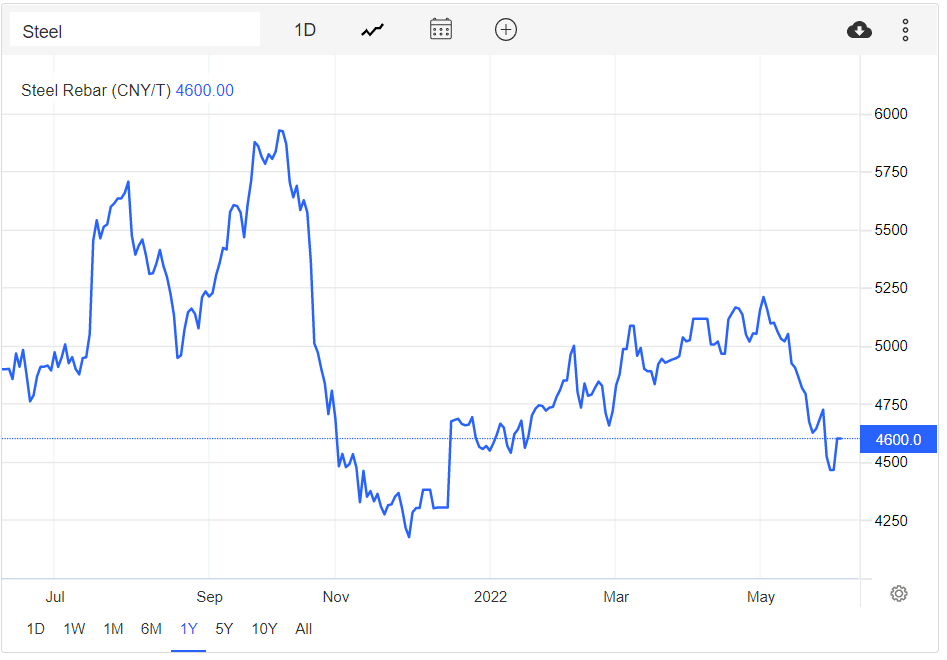
For example, if you took on a project in January 2022 when the price of steel was over $680 per tonne, you would have counted on that pricing and put it in your bid.
Now, since the price of steel has been rising steadily, by the time you were ready to purchase the necessary materials in May 2022, the required amount would have already reached $772.
If you had carefully calculated your contingency, this difference in material pricing would have been covered without putting a major dent in the budget.
Therefore, as demonstrated by this example, by implementing contingencies, it’s easier to avoid overspending.
Finally, all the other benefits we’ve mentioned are a part of risk management.
Even if any challenges appear, you can rest assured that nothing will derail the project, and your contingency is a silver lining that will keep the project moving according to schedule.
Moreover, contingencies will help you make better decisions and prioritize tasks to mitigate problems.
In a nutshell, contingencies are important to handle projects and solve issues that can pop up at any point.
Types of Construction Contingencies
Every stakeholder wants to protect themselves against project problems that will force them to dig deeper into their pockets.
So, since no contingency is one-size-fits-all, you can also use three distinct types of contingencies in your construction project.
Design Contingency
Designers do their best to create a realistic and feasible design for every project. Unfortunately, some issues may occur and completely alter design elements. Some of them are:
- Scope creep
- Necessary upgrades
- Unavailable materials
This means that designers need to go back to the drawing board and include these changes in new project plans.
Often, more money has to be spent, so they rely on the so-called design contingency.

To put it briefly, the design contingency refers to unforeseen costs during the design phase.
While the designer is responsible for accounting for every detail in creating project plans, the client is responsible for covering additional costs if problems arise during this phase.
As a project evolves, changes will inevitably be made to the original design.
So, the design contingency is necessary to mitigate the impact of the various variations and updates inherent to the design process.
Construction Contingency
Changing project requirements often means that there need to be major changes in the construction phase.
A contractor will have to remove a wall or add another opening, but there should be a construction contingency (also known as contractor contingency) to cover these additional costs.

This contingency puts the responsibility on the contractor to finance any additional costs incurred by the project.
Like other types of contingencies, these funds should only be spent on the expenses brought about by those unforeseen circumstances that the contractor couldn’t have factored in the original budget estimate.
Owner Contingency
Sometimes owners will reserve additional funds to account for project overruns.
They also want to protect themselves from risks and litigation, but also ensure their projects finish on time and within budget.
In most cases, the owner’s contingency is set aside because the owner wants to be able to change the design, schedule, or resources—for example, by removing a wall to create an open plan concept or investing in a better electrical or plumbing system.

It’s important to note that owner contingencies are most often used in fixed-price contracts where the project’s scope and budget are clearly defined.
This means there are specific cases and reasons when the owner’s contingency can be used, but also it should not cross a specified amount.
This is especially important since other stakeholders, namely contractors, can view the owner’s contingency as free money to cover their own mistakes.
Quinn Murphy, whom we’ve quoted earlier, also emphasizes this point.
Suppose contractors are aware of the owner’s contingency. In that case, contractors will create a lower bid and rely on submitting a contingency claim during construction, only to be surprised when the owner rejects it.
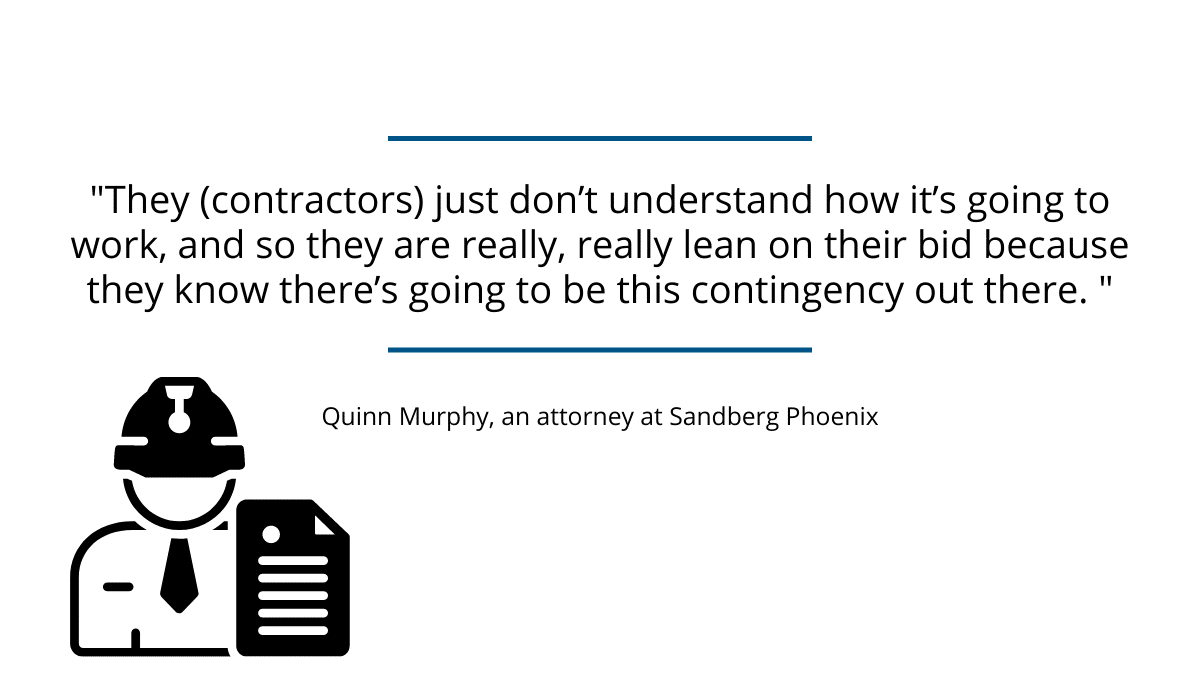
Therefore, it’s important to remember that owner contingency is just like any other contingency we’ve already mentioned. It should only be used in justifiable cases where unforeseen conditions greatly impact timely project completion and jeopardize the budget.
Conclusion
Everyone is aware that construction projects are full of risks. How you manage them depends solely on your processes and available funds.
Planning a contingency in your budget is a commendable practice, but you should be careful to allow enough buffer money to account for most unforeseen conditions.
Carefully calculate how much of the total budget you can allocate for contingencies for each project.
Then, you should openly communicate with other stakeholders how they can access that money once problems arise and new costs need to be covered.
All in all, contingencies are an important part of risk management and should help you plan and execute projects on time and within budget.









